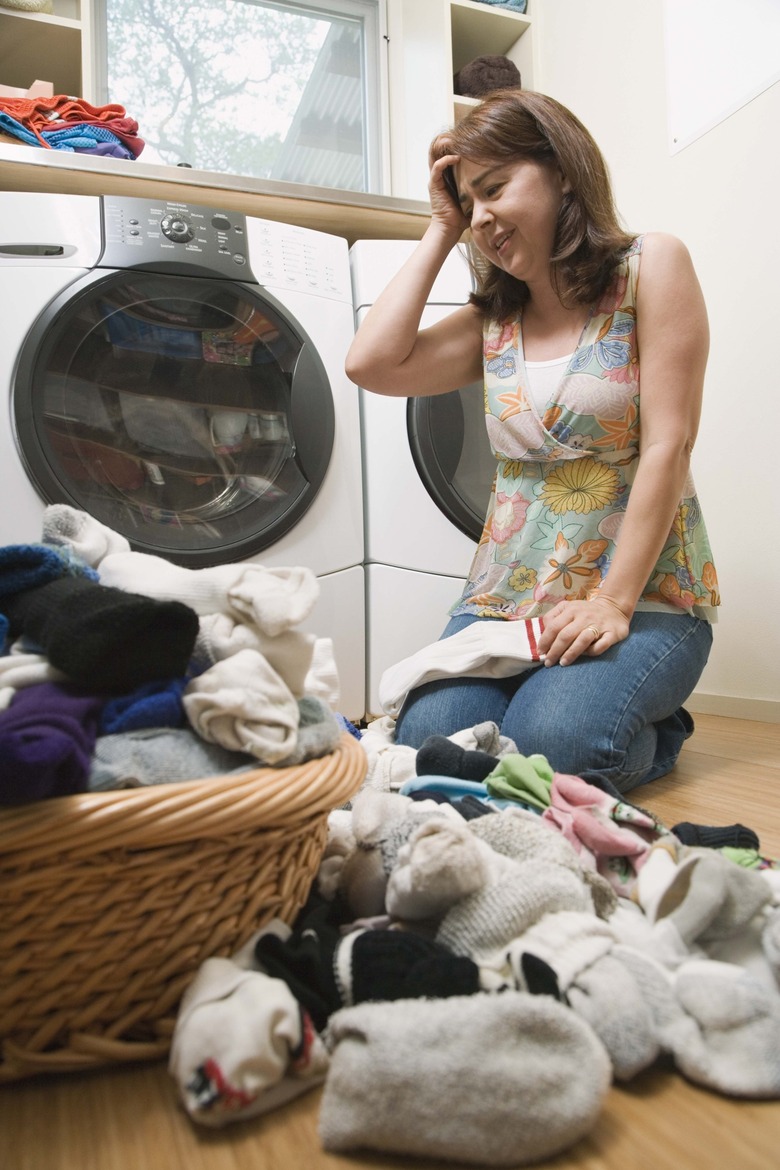What Happens To Washing Machines If The Capacitor Is Bad?
A broken washing machine can instill panic in a homeowner, prompting visions of an expensive repair or replacement. The problem could be something relatively minor, like a bad capacitor. If you're handy, you can probably replace a capacitor yourself at very little cost. To diagnose a bad capacitor, you need to know what it does and how a malfunction affects the washing machine.
What a Capacitor Does
What a Capacitor Does
There are two types of capacitors — starter capacitors, which run for just a few seconds when a high-load motor starts, and run capacitors, which run continuously. Washing machines use starter capacitors to start the motor by increasing the torque for a few moments. Once the motor is running, the capacitor disconnects, allowing the washer to start and stop as necessary through the cycle. Without the increased torque of the starter capacitor, the motor will not start and run properly.
Signs of a Bad Capacitor
Signs of a Bad Capacitor
A washing machine with a bad capacitor may fail to start altogether. However, if the starter capacitor has a current that's weak but not dead, the machine may start, but it will overheat, hum loudly or run sluggishly. A bad capacitor is just one possibility if the machine won't start at all; other possibilities include a blown fuse or breaker shutoff, a broken belt or a burned-out motor. Check the capacitor after confirming that the machine is getting power and — after unplugging the machine — to ensure the belt is intact and in place. This will involve opening up the washer to access the motor, so you'll need to refer to your manual on how to open your specific machine.
Testing a Capacitor
Testing a Capacitor
If the machine is getting power and the belt is intact, you'll need to test the starter capacitor. The capacitor is small and cylindrical, usually either black or white, with two terminals that connect to the motor with wires. To test the capacitor, you will need an ohmmeter. When hooked up to the terminals, the ohmmeter should register a low reading that increases steadily. If the needle doesn't move or if there is no reading at all, the capacitor is bad and should be replaced.
Capacitor Replacement
Capacitor Replacement
If you've managed to open up your washing machine cabinet, locate the starter capacitor and test it, you're already past the hardest part of starter capacitor replacement. The old capacitor will be held in place with a metal or plastic retainer that's connected to the motor housing or the machine's rear panel. Disconnect the wires from the terminals and remove the bad capacitor from the retainer. Slide the new capacitor in place and connect the wires to the terminal. To close the washer, reverse the steps you took to open it. Replacement starter capacitors are sold at electrical contractor suppliers and online.
